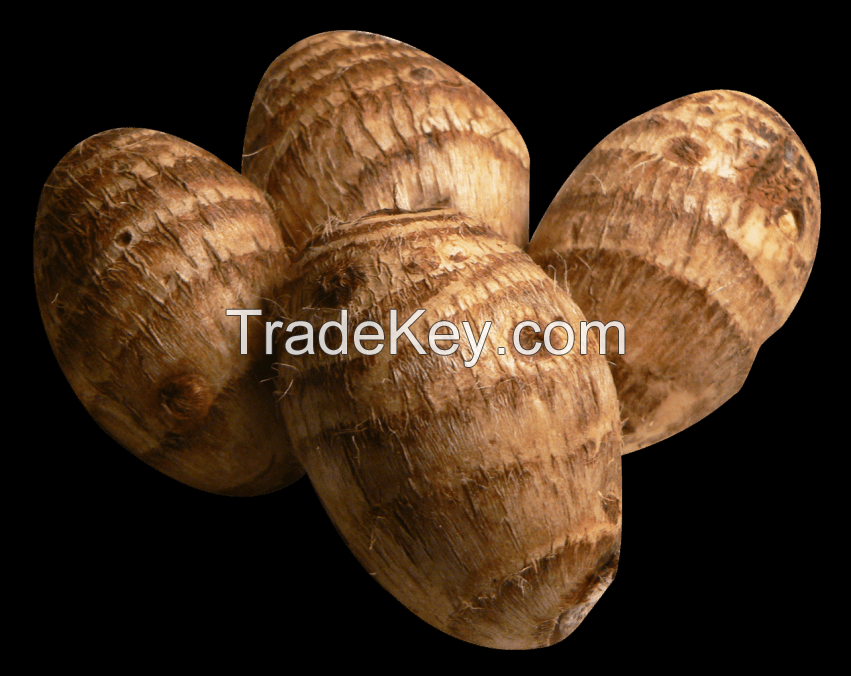タイトルまたは説明
Colocasia is a genus of flowering plants in the family Araceae,
native to southeastern Asia and the Indian subcontinent. Some
species are widely cultivated and naturalized in other tropical and
subtropical regions. Common names include tarul, karkala ko ganu,
elephant-ear, taro, cocoyam, dasheen, chembu,
chamadhumpa/chamagadda in Telugu, shavige gadde, and eddoe.
Elephant-ear and cocoyam are also used for some other large-leaved
genera in the Araceae, notably Xanthosoma and Caladium. The generic
name is derived from the ancient Greek word kolokasion, which in
the Greek botanist Dioscorides (1st century AD) meant the edible
roots of both Colocasia esculenta and Nelumbo nucifera. It is
thought that the edible roots of Colocasia esculenta have been
cultivated in Asia for more than ten thousand years. The species
Colocasia esculenta is an invasive species in wetlands along the
American Gulf coast, where it threatens to displace native wetland
plants.
They are herbaceous perennial plants with a large corm on or just
below the ground surface. The leaves are large to very large, ****0
cm (7.**9.1 in) long, with a sagittate shape. The elephant's-ear
plant gets its name from the leaves, which are shaped like a large
ear or shield. The plant reproduces mostly by means of rhizomes
(tubers, corms), but it also produces "clusters of two to five
fragrant inflorescenes in the leaf axils". Like other members of
the family, the plant contains an irritant which causes intense
discomfort to the lips, mouth and throat. This acridity is caused
in part by microscopic needle-like raphides of calcium oxalate
monohydrate and in part by another chemical, probably a protease.
The acridity helps to naturally deter herbivores from eating it. It
must be processed by cooking, soaking or fermenting sometimes along
with an acid (lime or tamarind) before being eaten.
| 国: |
Pakistan |
| モデル番号: |
-
|
| 离岸价格: |
(交渉可能)
Get Latest Price
|
| ロケーション: |
- |
| 最低注文量の価格: |
- |
| 最低注文量: |
- |
| パッケージの詳細: |
- |
| 納期: |
- |
| 供給能力: |
- |
| 支払いタイプ: |
- |
| 製品グループ : |
- |

